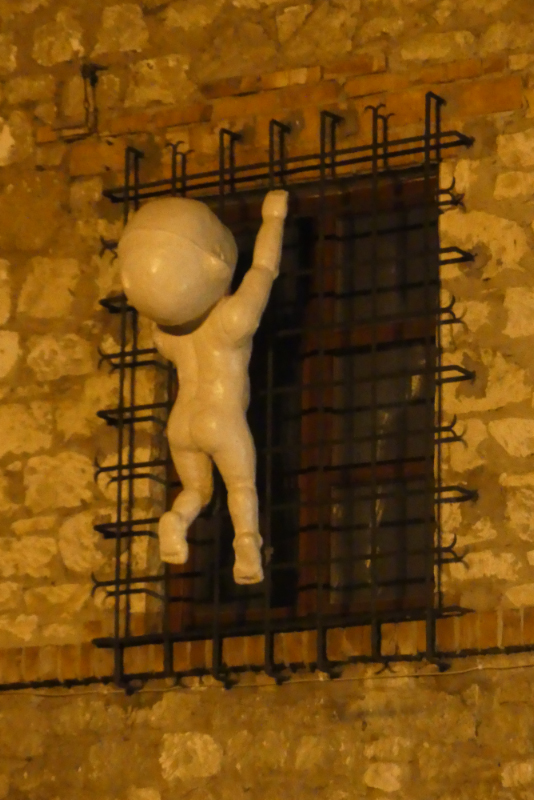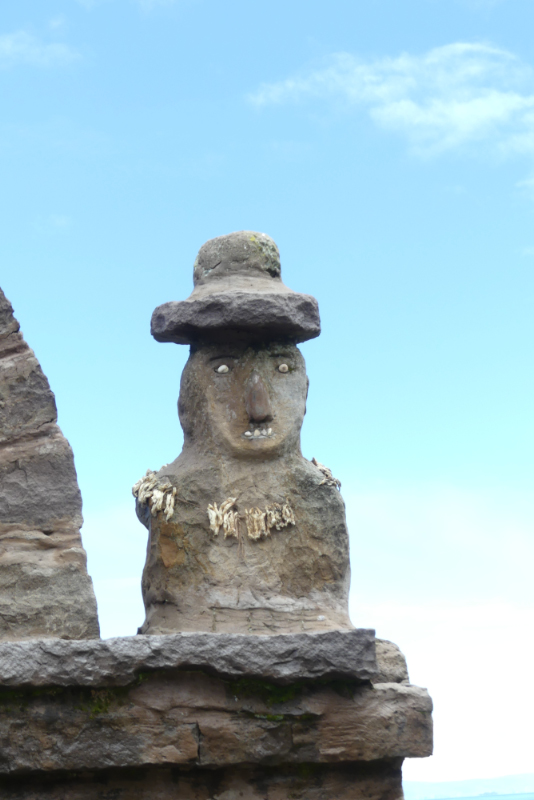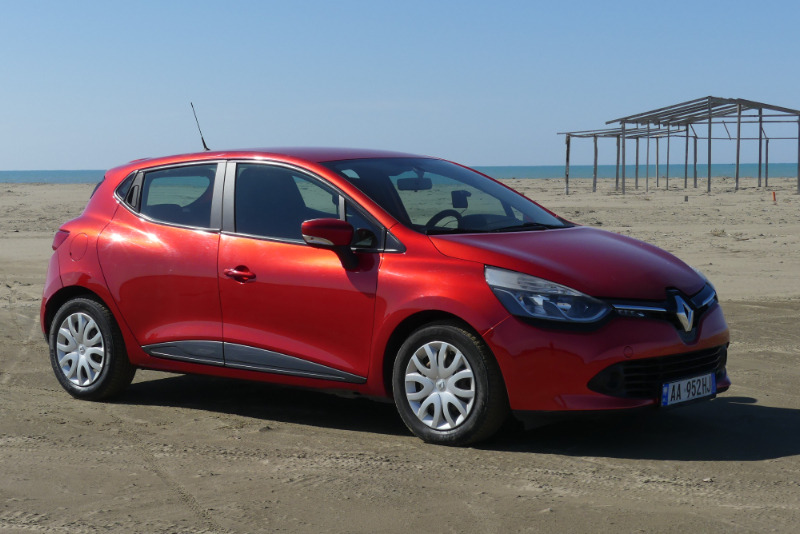Sunday 24 to Tuesday 26 December
We arrived in Cuenca but Jose struggled to get us to our hotel – the streets were blocked off for repair. We had a nice room with an amazing view over the city – but it was right next to a very noisy elevator and below the air conditioning unit for the entire building. I was grumpy the next morning and begged to move to a quieter room, which sadly didn’t offer the same amazing view over the city.
We did however find a rather lovely Italian restaurant, complete with typical Italian ambience. Sadly it wasn’t open on Christmas Day and we were forced to have a quiet Christmas meal in a nearby hotel.
Jose took us out on Christmas Day for some local sightseeing.
Our first stop was the Cascade El Chorro waterfall. It is one of Ecuador’s tallest waterfalls, close to a 100m in height. The climb up to the waterfall was rather slippery, through a rain forest with a lot of beautiful lichen moss hanging from the trees. Jose explained that as children they would collect the moss to decorate their nativity scenes. It is protected now, and he agreed that it looked better on the trees than with Mary and Joseph.
There were a lot of visitors to the waterfalls, but one very brave man decided to jump into the water – he was tethered, in case the very cold water took his breath away!
We then drove to the Laguna da Busa, a rather lovely lake. It was cool and the clouds started to roll in. Jose was exhausted after many hours of difficult driving, and perhaps some Christmas Eve celebrations with his family who lived nearby. We took the opportunity to walk around the lake. A dog started to follow Bruce – he certainly is attracted to them.
Fishing seemed to be a popular pastime, and there were a few picnickers. An old man and a young girl were practicing on their guitars under a eucalypt gum.
After losing sleep in our noisy room the previous night, we were tired. As we expected, most restaurants were closed, and we ended up eating a very simple meal at the hotel next door. Perhaps one of the quietest Christmases Bruce & I have ever had.
Jose showed us around Cuenca the next day. First to the flower market of Santuario Mariano, then we joined a tour in and around the Catedral de la Immaculada Concepción, commonly referred to as the New or Metropolitan Cathedral, which sits in front of Parque Calderon.
The plans for the cathedral were drawn up by a German-born friar Juan Bautista Stiehle and commenced in 1885. It took almost a century to complete.
It is an extravagant cathedral with pink marble floor brought from Italy, stained glass windows created by Spanish artist Guillermo Larrazábal and a façade made of alabaster and local marble.
We were taken to the crypt, where a lot of famous Ecuadorians are buried, and then to the monastery to gaze up at its famous three domes which are covered in blue and white glazed tiles from Czechoslovakia.
It appears that the architect made an error in calculating the height of the towers, which is just as well as the foundations would not have born the extra weight.
In front of the cathedral is Parque Caldéron, and a statue of the very famous Simón Bolívar. Simón José Antonio de la Santísma Trinidad Bolívar y Palacios was born into a wealthy family on July 24, 1783 in Caracas, New Granada (now Venezuela). While in Europe he kept company with Napoleon, and later returned to South America where he joined the resistance and fought for independence from the Spanish. By 1821 he saw the creation of the Gran Colombia, under his leadership. This federation included much of what is now Venezuela, Colombia, Panama and Ecuador and later Peru. Whilst the Gran Colombia vision failed, individual nations emerged. Simón Bolívar died in Santa Marta, Colombia, from what may have been tuberculosis.
Jose then drove us up to the Mirador de Turi to get a view of the city and particularly the cathedral.
Our last stop for the day was the town of Baños de Cuenca, famous for its hot springs. We didn’t indulge but had a wonderful view from the Church of Holy Spirit and our Lady of Guadalupe, built in 1955.
The roads in Ecuador are not good – they twist and turn around the mountainous Andes. We spent most of our time between 2500m to 3000m elevation. There are pot holes large enough to drive into. The drivers aren’t good either – they drive fast and erratically, they cut corners and overtake in tight spaces. The cars aren’t good either – old, run down and not serviced. Many of our journeys were in the clouds. Often we couldn’t see the road a mere 20m ahead.
So it was not surprising that we saw incidents. We were held up by one awful motor cycle / truck accident. It appeared that the truck had run the motor cyclist down as he was trying to overtake another vehicle in the cloud.
At one stage I was sitting the front seat when bus lights were heading towards us, as the driver was overtaking a truck in fog! Somehow we missed each other.
Ecuador is a poor country however Jose talked a lot about the past president who finished his term just a few months earlier. There was oil in the jungle. He gave the Chinese 10 years access to it and used that income to improve roads and education. We saw many signs ‘Ecuador has changed’ showing education, health and employment improvements and signs promoting ‘buy Ecuadorian ‘ shoes, food, clothes.
He also banned alcohol sales after 2am and on Sundays. Even private parties must finish by 2am. There is a big police presence to manage this.
Corruption has been rife, the past vice president is already jailed and past president has escaped to Switzerland.
Most products we bought, including beer and chocolate, were made in Ecuador. The country is self-sufficient for fruit, vegetables and meat. The major exports are oil and bananas. For the domestic market, jeans and shoes are manufactured locally, as well as gold and silver. The country is reliant on small manufacturing units that are not suitable for the export market, and small farms that are worked by families. The country is so mountainous that it is difficult to cultivate anything with big machinery.
The Ecuadorians prefer to maintain a mostly indigenous life style with small farms, small shops and carts selling food and goods.
It is a very religious country, with 80% of the population practicing as Catholic.
e_header.jpg)




























































